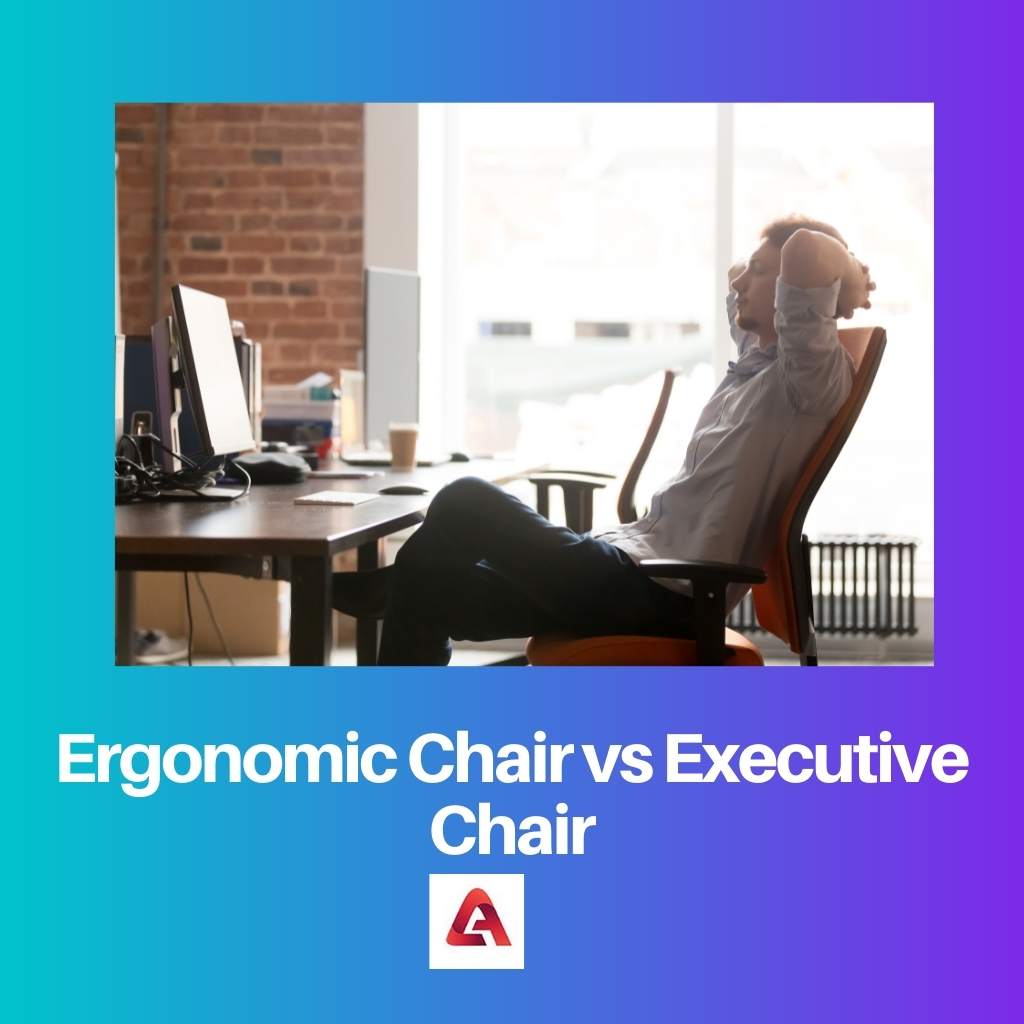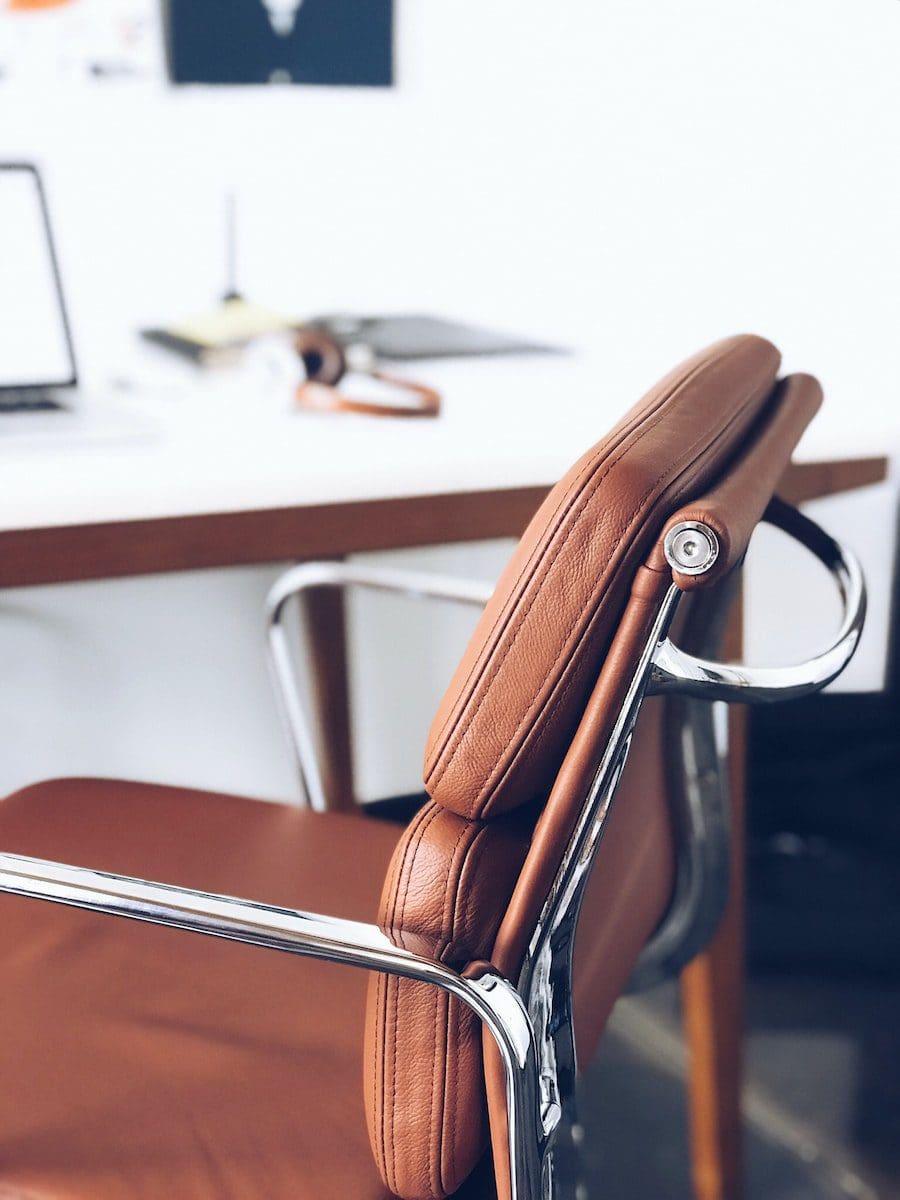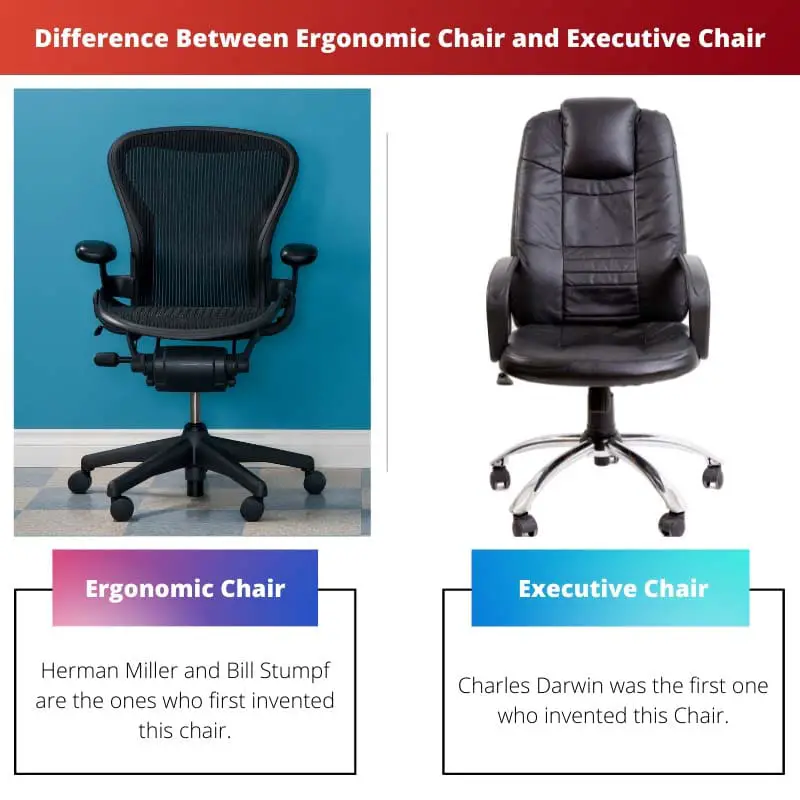An ergonomic chair is designed to provide optimal comfort and support, prioritizing proper body alignment to reduce the risk of musculoskeletal issues. In contrast, an executive chair often emphasizes a luxurious appearance and may lack the specific ergonomic features necessary for prolonged comfort and health.
Key Takeaways
- Ergonomic chairs are designed for comfort and support, while executive chairs are designed for status and appearance.
- Ergonomic chairs are adjustable to suit individual body types, while executive chairs have fixed designs.
- Ergonomic chairs promote good posture and reduce the risk of injury, while executive chairs do not have ergonomic features.
Ergonomic Chair vs Executive Chair
The difference between an ergonomic chair and an executive chair is that an ergonomic chair is a chair designed to give the best support to the human body considering the comfort and health of a person, and on the other hand, an executive chair is a tall premium chair backed in officers for providing comfort to the entire upper body during long working hours.

The term ergonomic chair is derived from a scientific term named ergonomics which is known as human engineering or for its biotechnologies.
The term executive chair is termed to be a premium chair with a stall backed in an office that provides maximum comfort to the entire upper body of a person.
Comparison Table
| Feature | Ergonomic Chair | Executive Chair |
|---|---|---|
| Focus | Support & User Well-being | Comfort & Status |
| Adjustability | Highly Adjustable (seat height, armrests, lumbar support, headrest) | Limited Adjustability (may have height and armrest adjustment) |
| Materials | Breathable mesh or fabric for comfort and airflow | Leather or high-quality fabric for a luxurious feel |
| Price | Variable (can be expensive due to adjustability features) | Generally Expensive due to premium materials and build quality |
| Posture | Promotes good posture with lumbar support and adjustability | May not actively encourage good posture |
| Ideal Use | Long periods of sitting or for those prioritizing ergonomics and comfort | Shorter periods of sitting or for those who want a luxurious and imposing chair |
| Examples | Task chairs, mesh chairs | High-back leather chairs, wingback chairs |
What is Ergonomic Chair?
Ergonomic chairs are specially designed chairs that aim to provide maximum comfort and support while promoting good posture. These chairs are crafted with the intention of reducing the risk of musculoskeletal problems and enhancing overall well-being, particularly during prolonged periods of sitting. Let’s delve into the various aspects of ergonomic chairs.
Key Features
1. Adjustable Seat Height
Ergonomic chairs typically come with a height-adjustable feature, allowing users to set the chair at a comfortable level that aligns with their desk and body proportions. This feature helps prevent strain on the legs and promotes proper blood circulation.
2. Lumbar Support
One of the critical elements of an ergonomic chair is lumbar support. This feature provides essential support to the lower back, maintaining the natural curve of the spine. Adequate lumbar support helps prevent lower back pain and reduces the risk of developing spinal issues over time.
3. Seat Depth Adjustment
The ability to adjust the seat depth ensures that users can position themselves optimally on the chair. This feature allows for proper thigh support, preventing discomfort and enhancing overall sitting posture.
4. Armrest Adjustability
Ergonomic chairs often include adjustable armrests, catering to different body types and preferences. Properly positioned armrests reduce strain on the shoulders and neck, promoting a relaxed sitting experience.
Materials and Design
1. Breathable Materials
Ergonomic chairs are commonly constructed with breathable materials, such as mesh, to enhance air circulation. This prevents heat buildup and maintains a comfortable temperature during extended periods of sitting.
2. Contoured Design
The chair’s design is often contoured to follow the natural curves of the human body. This contouring provides additional support to various areas, ensuring a more comfortable and ergonomic sitting experience.
Health Benefits
1. Reduced Musculoskeletal Strain
Ergonomic chairs contribute to a significant reduction in musculoskeletal strain, particularly in the neck, shoulders, and lower back. This can lead to a decrease in discomfort and a lower risk of chronic pain conditions.
2. Improved Posture
By providing proper support and adjustability, ergonomic chairs promote better sitting posture. This not only reduces the risk of developing poor posture habits but also contributes to overall spine health.

What is Executive Chair?
An executive chair is a type of office chair designed for individuals in leadership or managerial positions within an organization. These chairs are specifically crafted to provide comfort, style, and functionality to executives who spend extended periods at their desks. With a focus on ergonomic design and high-quality materials, executive chairs aim to enhance the overall work experience for top-level professionals.
Key Features
1. Ergonomic Design
Executive chairs prioritize ergonomic features to support the natural posture of the body. These chairs often come with adjustable lumbar support, padded armrests, and a reclining mechanism to reduce strain on the spine and muscles.
2. High-Quality Materials
The construction of executive chairs involves premium materials to ensure durability and a sophisticated appearance. Common materials include genuine leather, faux leather, or high-grade fabric upholstery, complemented by a sturdy metal or wood frame.
3. Padded Seat and Backrest
Executive chairs typically feature a well-padded seat and backrest to provide maximum comfort during long working hours. The padding is designed to offer adequate support without compromising on style.
4. Swivel and Mobility
To facilitate ease of movement, executive chairs are equipped with a swivel base and smooth-rolling casters. This allows executives to access various parts of their workspace without straining or getting up frequently.
5. Adjustability
Executives often have unique preferences when it comes to their seating arrangement. Executive chairs address this by offering multiple adjustment options, such as height adjustment, tilt control, and customizable armrest positions.
Style and Aesthetics
1. Professional Appearance
Executive chairs are designed to exude professionalism and sophistication. The use of high-quality materials, sleek lines, and attention to detail contribute to a polished and upscale appearance suitable for executive offices.
2. Color Options
These chairs are available in a variety of colors to match the overall office decor. While classic black and brown are popular choices, some executive chairs come in more vibrant hues to suit individual preferences and office aesthetics.
Considerations for Purchase
1. Budget
Executive chairs come in a range of price points, so it’s important to establish a budget before making a purchase. Investing in a high-quality chair can contribute to long-term comfort and productivity.
2. Space and Size
Consider the available space in the office and the size of the executive chair. It should complement the desk and fit comfortably within the workspace without causing congestion.
3. Durability
Given the usage patterns of executives, durability is a key factor. Check the build quality, materials used, and customer reviews to ensure the chair can withstand daily use over an extended period.

Main Differences Between Ergonomic Chair and Executive Chair
- Design and Style:
- Ergonomic Chair: Designed with a focus on providing optimal support and comfort for prolonged sitting. Often has a more modern and adjustable design.
- Executive Chair: Tends to have a more traditional and luxurious design, often associated with high-back designs and leather upholstery.
- Adjustability:
- Ergonomic Chair: Typically offers a high degree of adjustability, allowing users to customize features like seat height, armrest height, lumbar support, and tilt to suit individual preferences.
- Executive Chair: While some may offer basic adjustments, they may not provide the same level of customization as ergonomic chairs.
- Comfort Features:
- Ergonomic Chair: Focuses on features like lumbar support, contoured seats, and breathable materials to enhance comfort during long periods of use.
- Executive Chair: Prioritizes plush padding, often with leather upholstery, and may sacrifice some ergonomic features for a more upscale appearance.
- Intended Use:
- Ergonomic Chair: Geared towards individuals who prioritize comfort and support, especially for tasks that involve extended periods of sitting, such as desk work or gaming.
- Executive Chair: Often associated with a more professional or executive office setting, where the emphasis is on style and status.
- Price Range:
- Ergonomic Chair: Prices can vary but may be more budget-friendly as they focus on functionality rather than luxury materials.
- Executive Chair: Tends to be pricier, reflecting the use of premium materials and a more upscale design.
- Appearance:
- Ergonomic Chair: Emphasizes a modern and functional appearance, often with a sleek and minimalistic design.
- Executive Chair: Prioritizes a classic and sophisticated appearance, with features like high-back designs, leather upholstery, and polished finishes.
- Target Audience:
- Ergonomic Chair: Appeals to a broad audience, including those seeking comfort for work or leisure activities.
- Executive Chair: Typically chosen by individuals in managerial or executive roles who prioritize a professional and luxurious office aesthetic.




